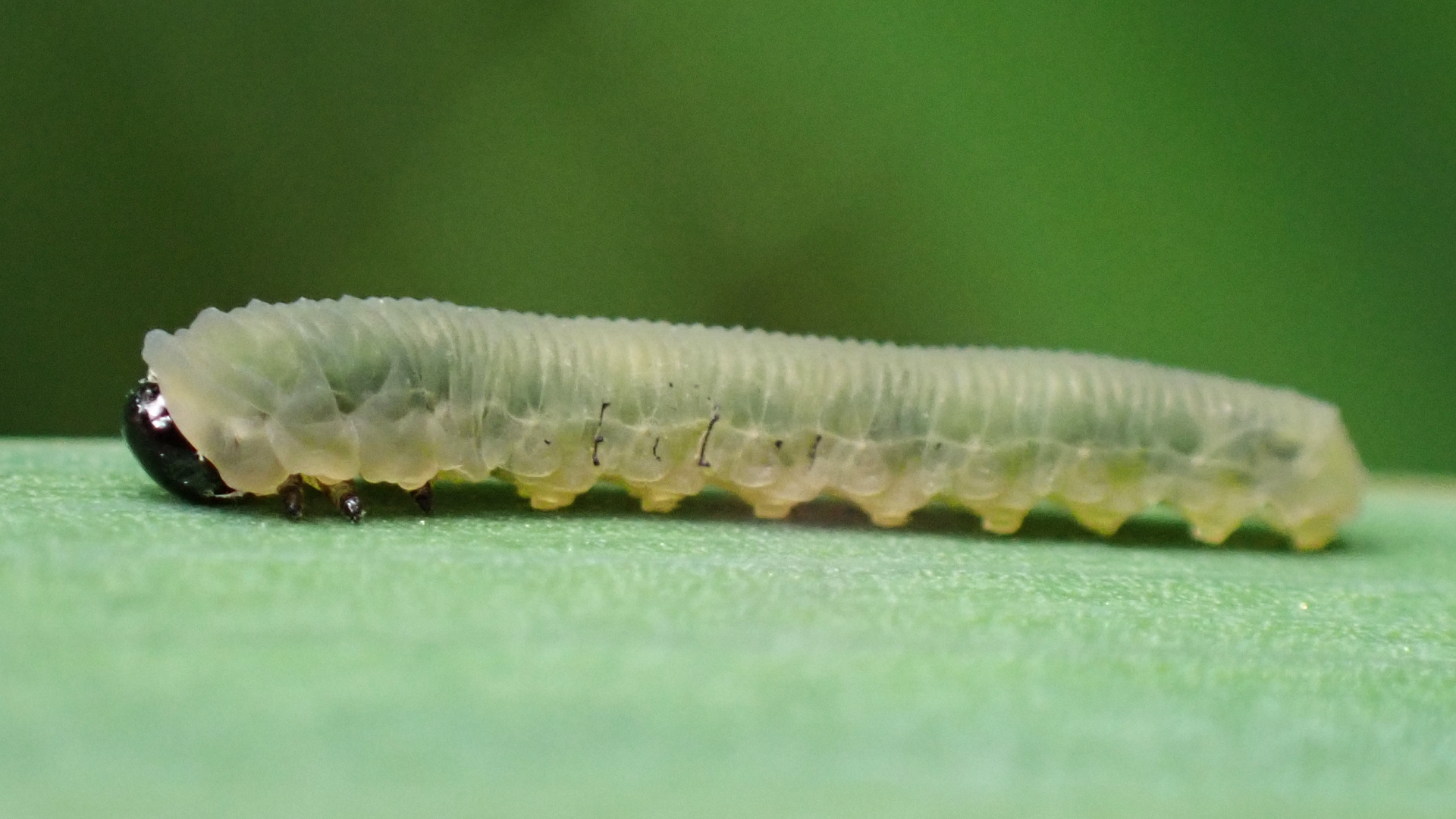Hymenoptera are a large insect order that includes the bees, wasps, ants and sawflies. Female sawflies use saw-like ovipositors to cut into the plants to lay eggs, hence the common name 'Sawfly'. The main difference between sawflies and other Hymenoptera is that the adults lack a narrow waist.
Iris Sawfly
Rhadinoceraea micans
The Iris Sawfly (7-8mm) is totally black and usually seen flying around Yellow Iris which is the larval foodplant. Phymatocera aterrima has a similar appearance, but has longer antennae and feeds on Solomon's seal.
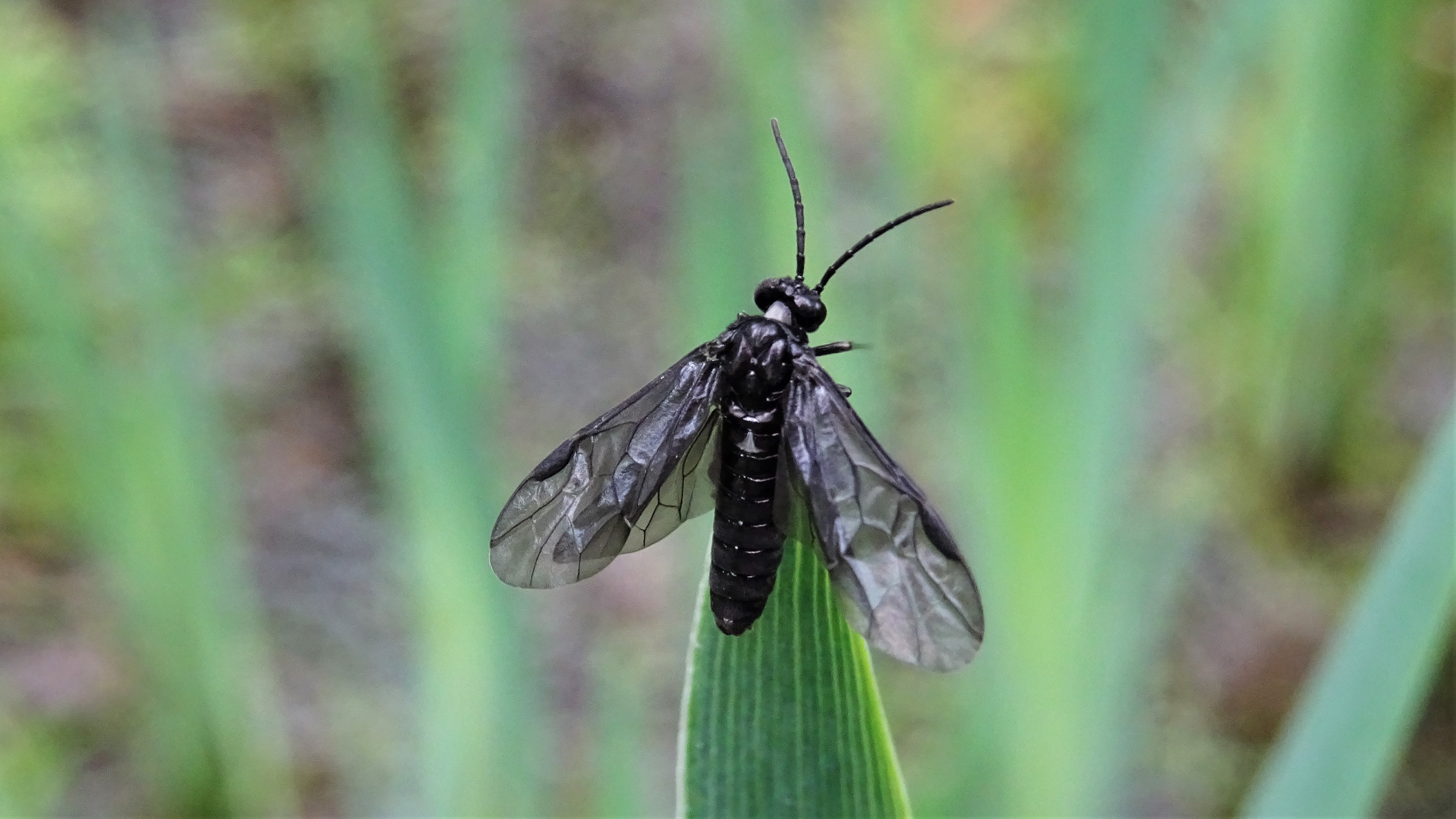
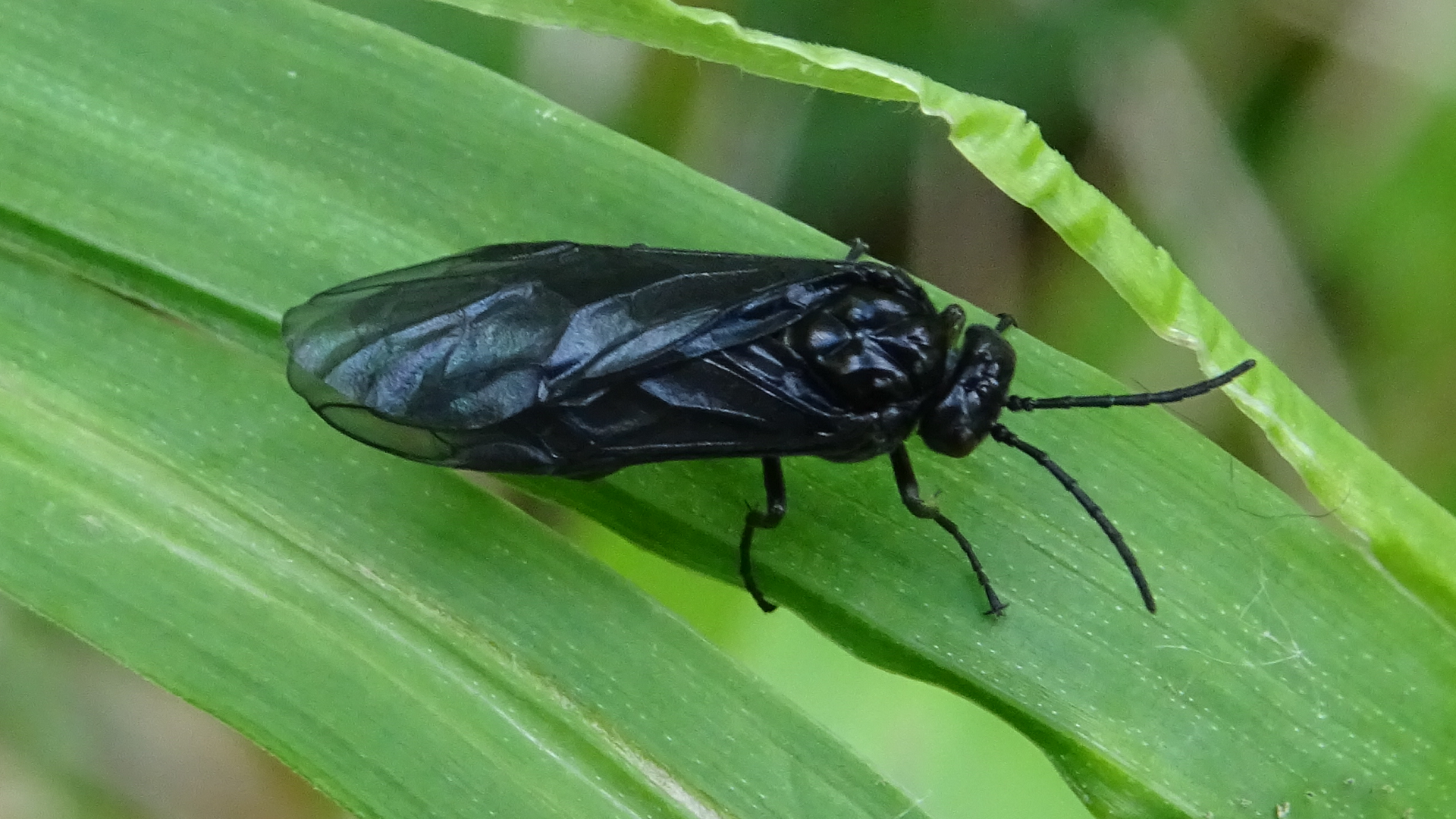
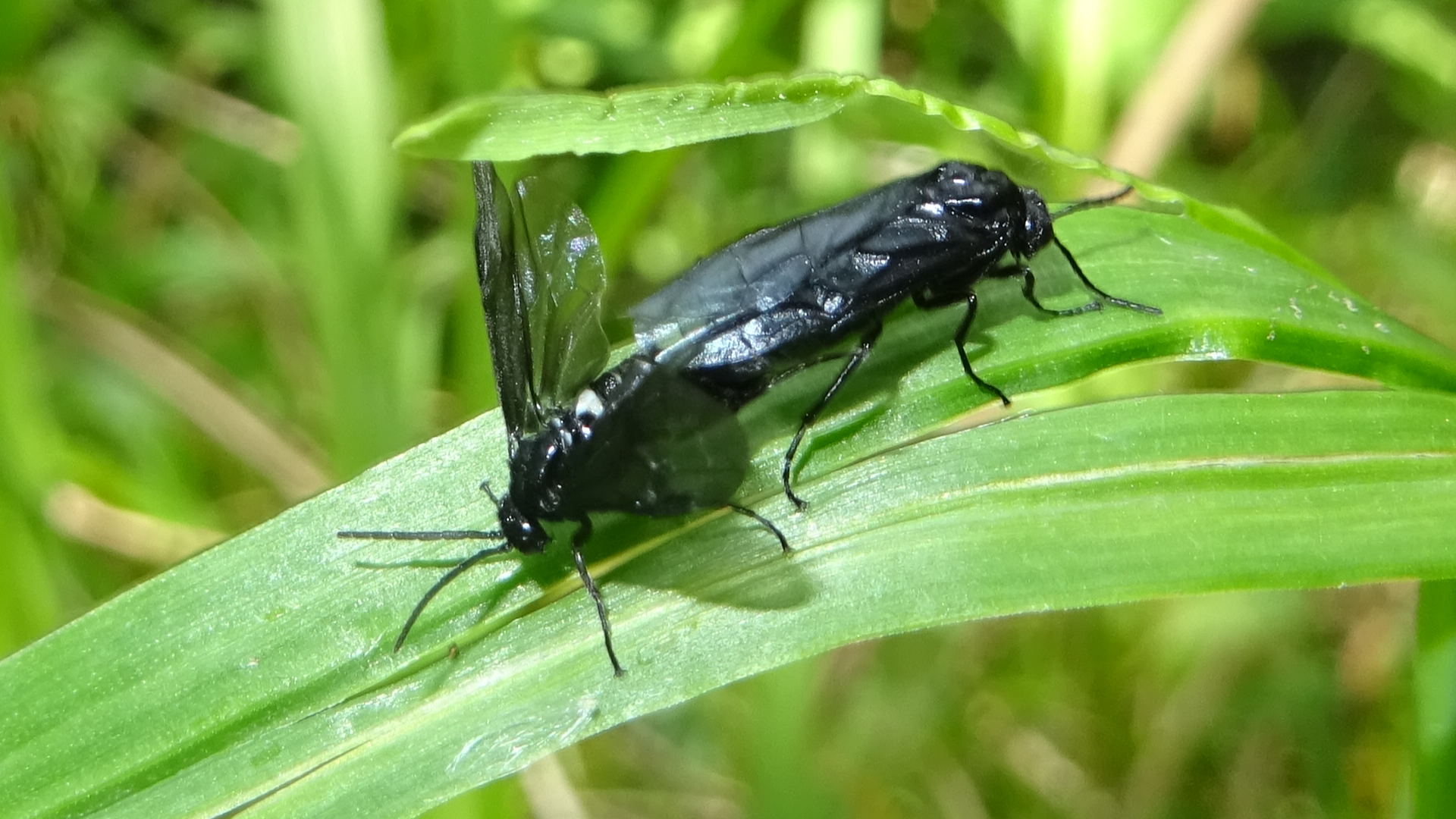
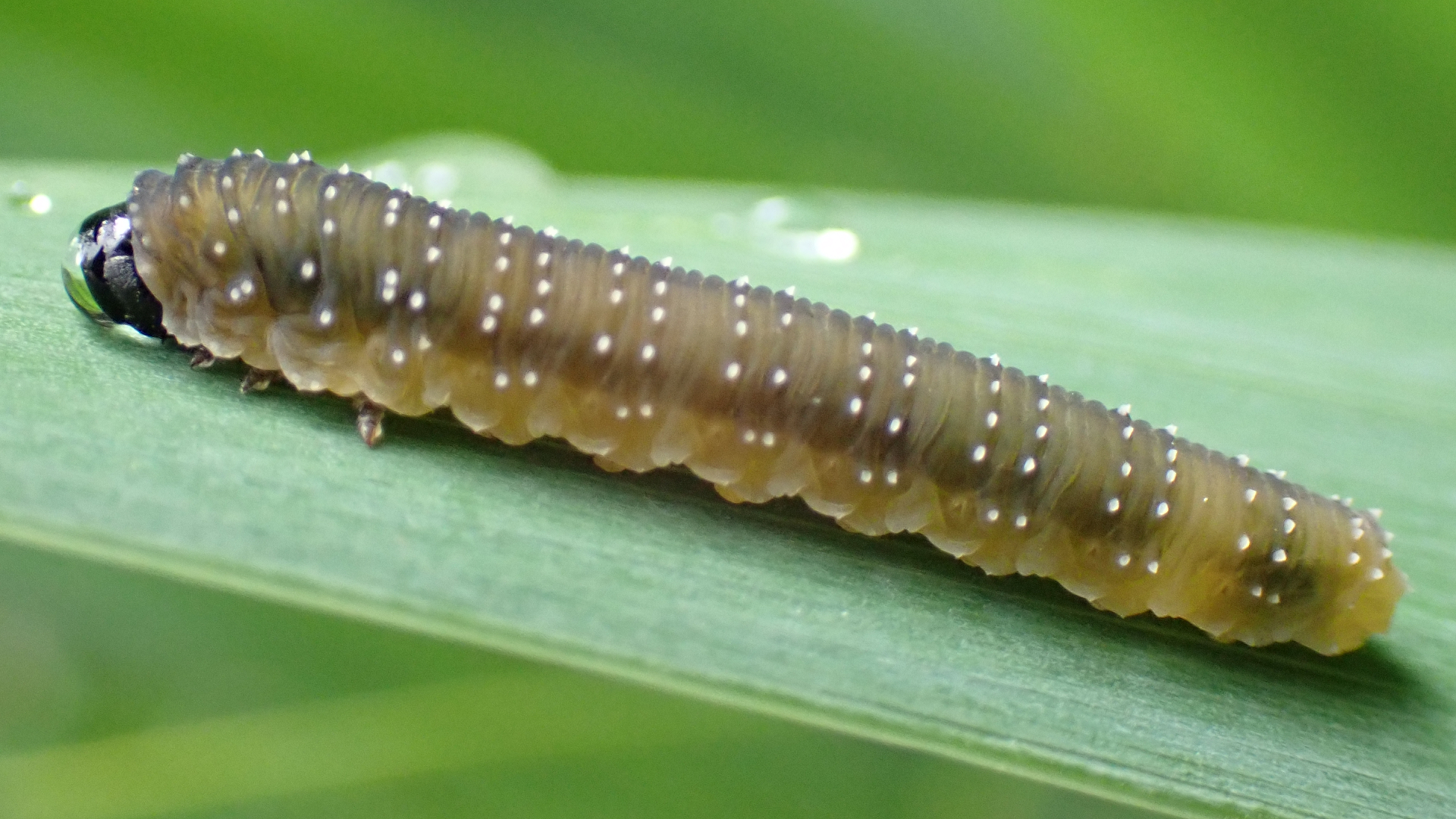
#
Saddleback Grass-cutter
Eutomostethus ephippium
This species (4-6mm) frequents meadows where its larvae feed on soft grasses. It flies from May to August and there may be two broods a year. The black legs have a pale band around the joint of the femora and tibia. It is also known as the Black and Red Sawfly, however this species has two colour forms, the other version lacks red on the thorax and mesopleura and is mainly seen in northern England.
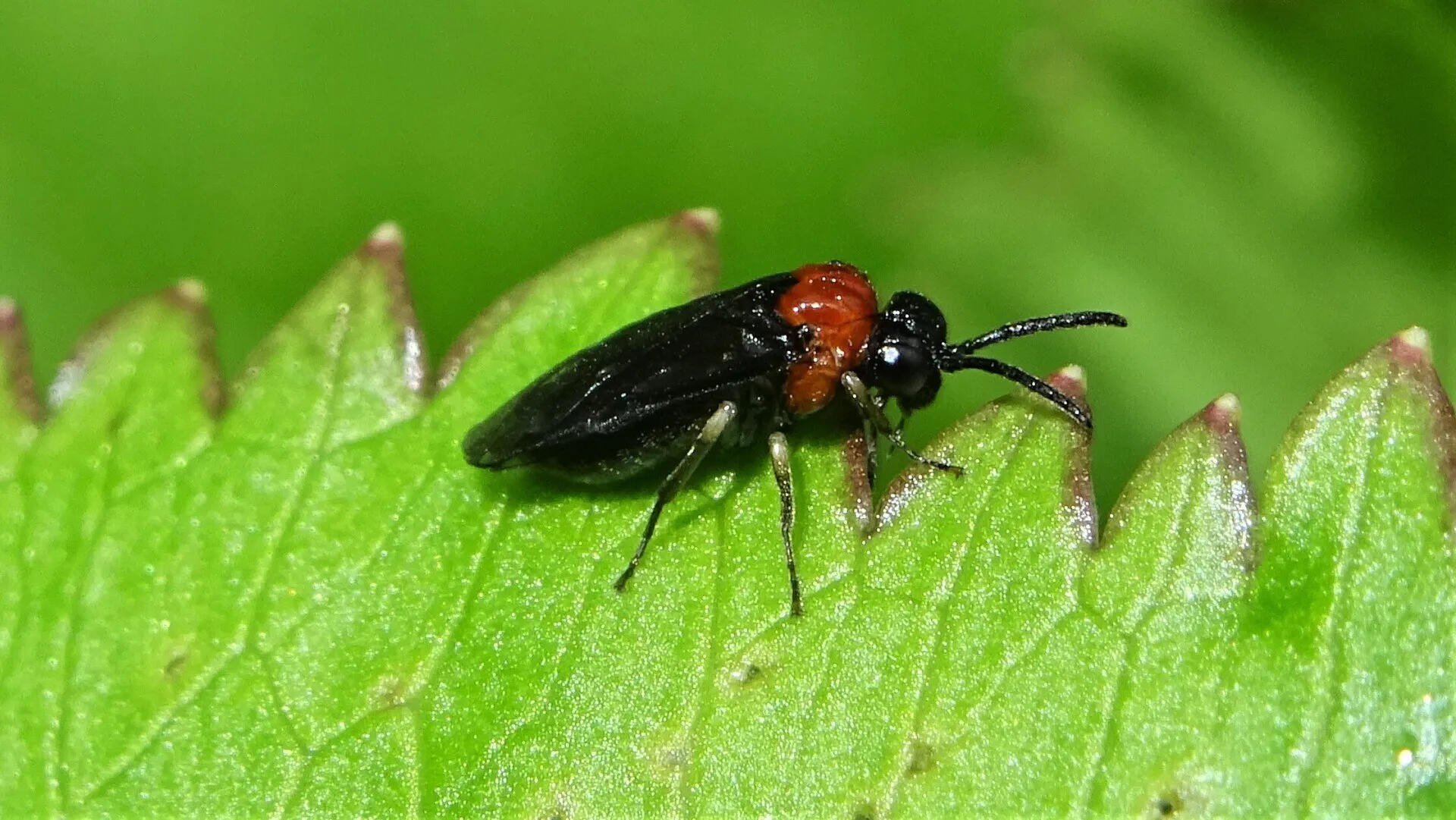
#
Common Green Sawfly
Tenthredo mesomela
The Common Green Sawfly is also known as the Black-backed Sawfly. It is large (9-13mm) with a black back and an apple green body, flying from May until July. Its larvae feed on a wide range of plants. Very similar to Tenthredo mioceras.
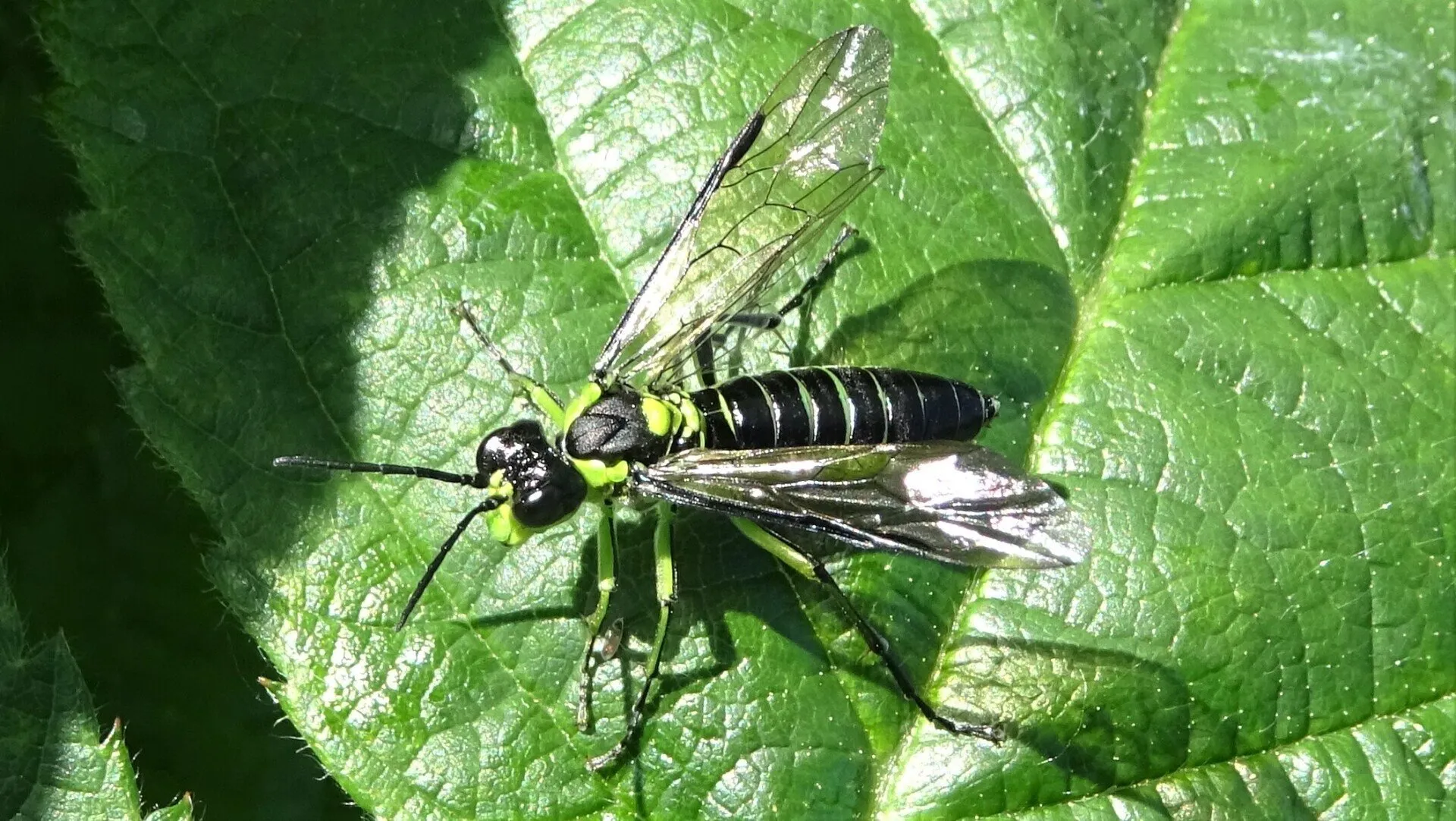
#
Bramble Sawfly
Arge cyanocrocea
Seen from May to July. This is a common sawfly with an orange body, black head and thorax and measures about 8mm in length. A dark band goes across the wings and the legs usually have black rings. Adults visit umbellifers for nectar and pollen. Bramble is the larval foodplant.

#
Clover Sawfly
Tenthredo arcuata/brevicornis/notha/schaefferi agg.
The Clover Sawfly (8-11mm) is one of four species that are very similar in appearance so this specimen has been recorded as the aggregate. The larvae feed on clover and vetchling.
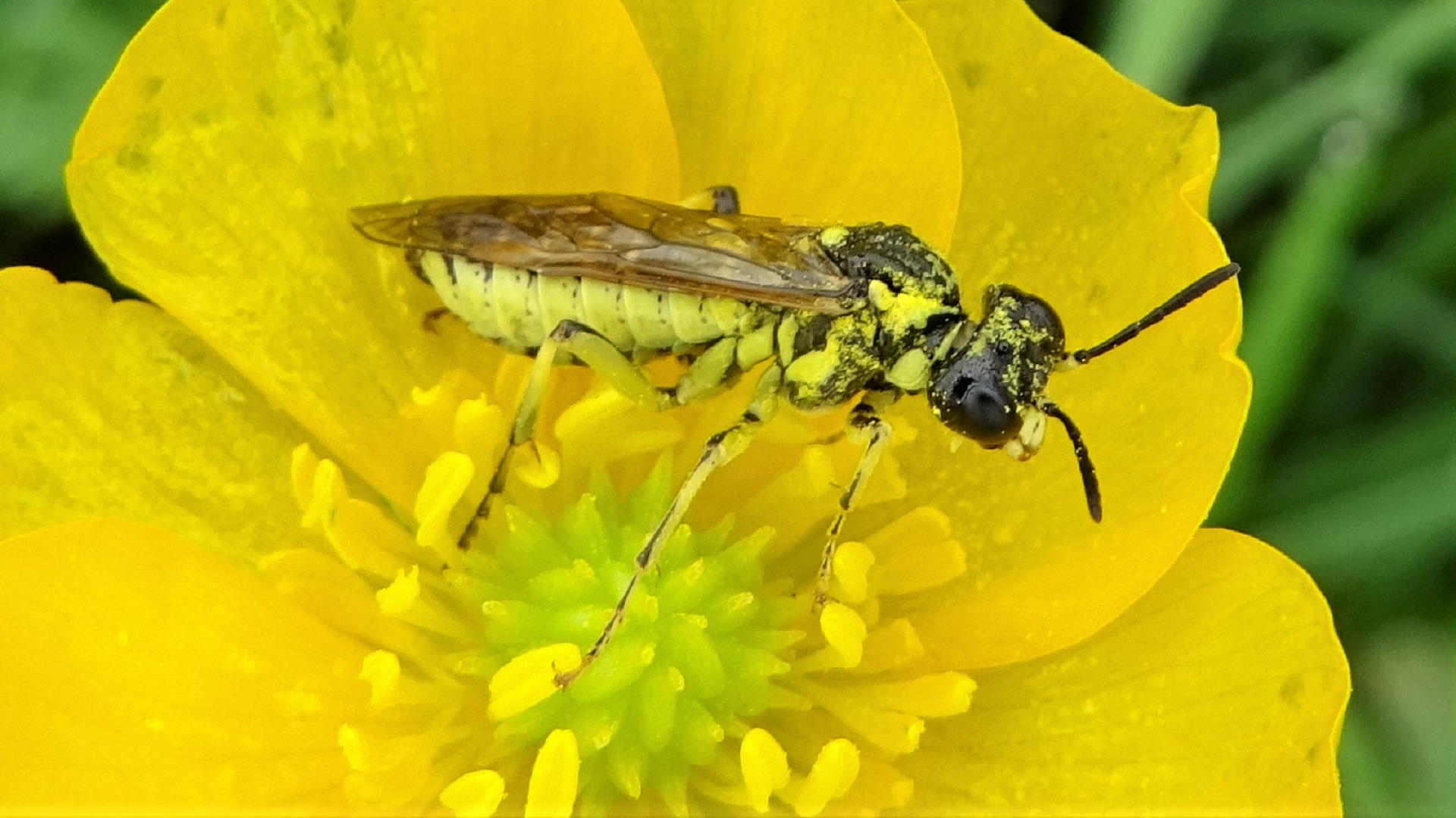
#
Turnip Sawfly
Athalia rosae
The Turnip Sawfly (7-8mm) is fairly easy to identify, with its orange thorax, abdomen and striped legs contrasted with black head and 'shoulder pads'. This species is also known as the Turnip Tigress, Cabbage Leaf Sawfly and Beet Sawfly.
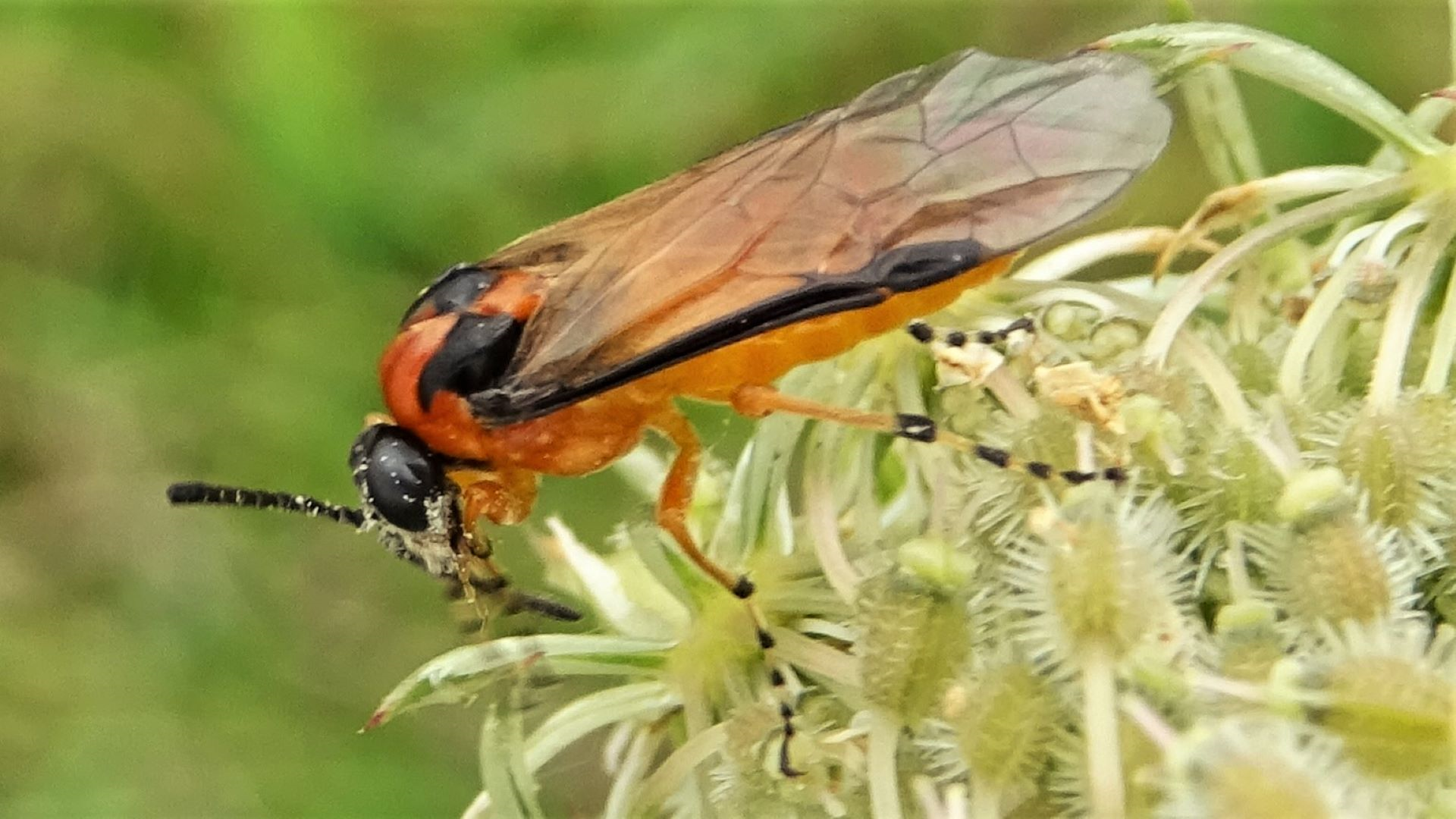
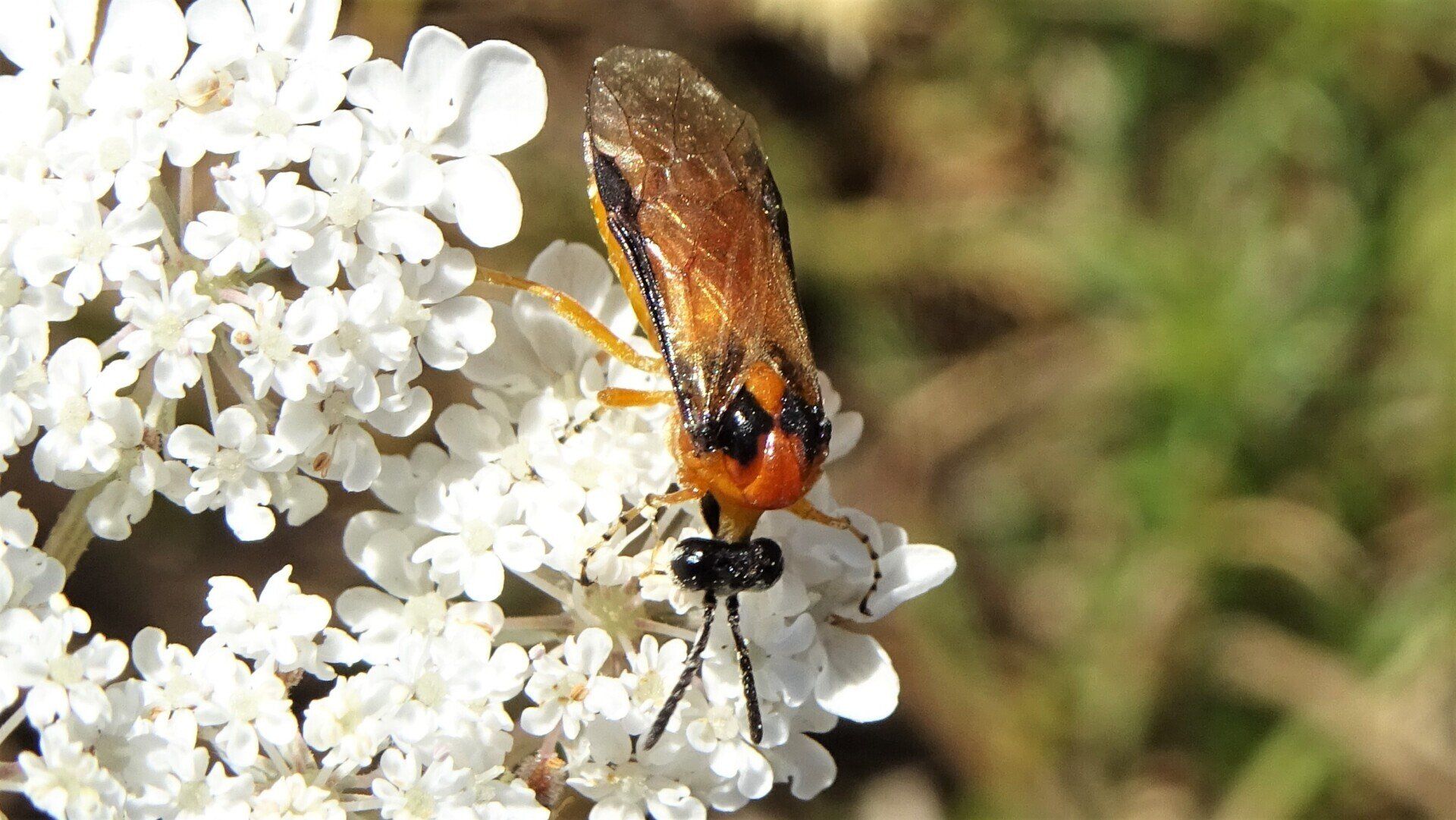
#
Large Rose Sawfly
Arge pagana
The Large Rose Sawfly is usually found on Dog rose. It has an orange abdomen and black sides to the thorax. It uses a tiny saw to make parallel cuts in fresh shoots of the host plant to lay eggs. Larvae emerge soon afterwards and move to the leaves to feed. Older instars are more solitary creatures and move on to eat the older leaves. Larvae of this species have pale hairs on the head.

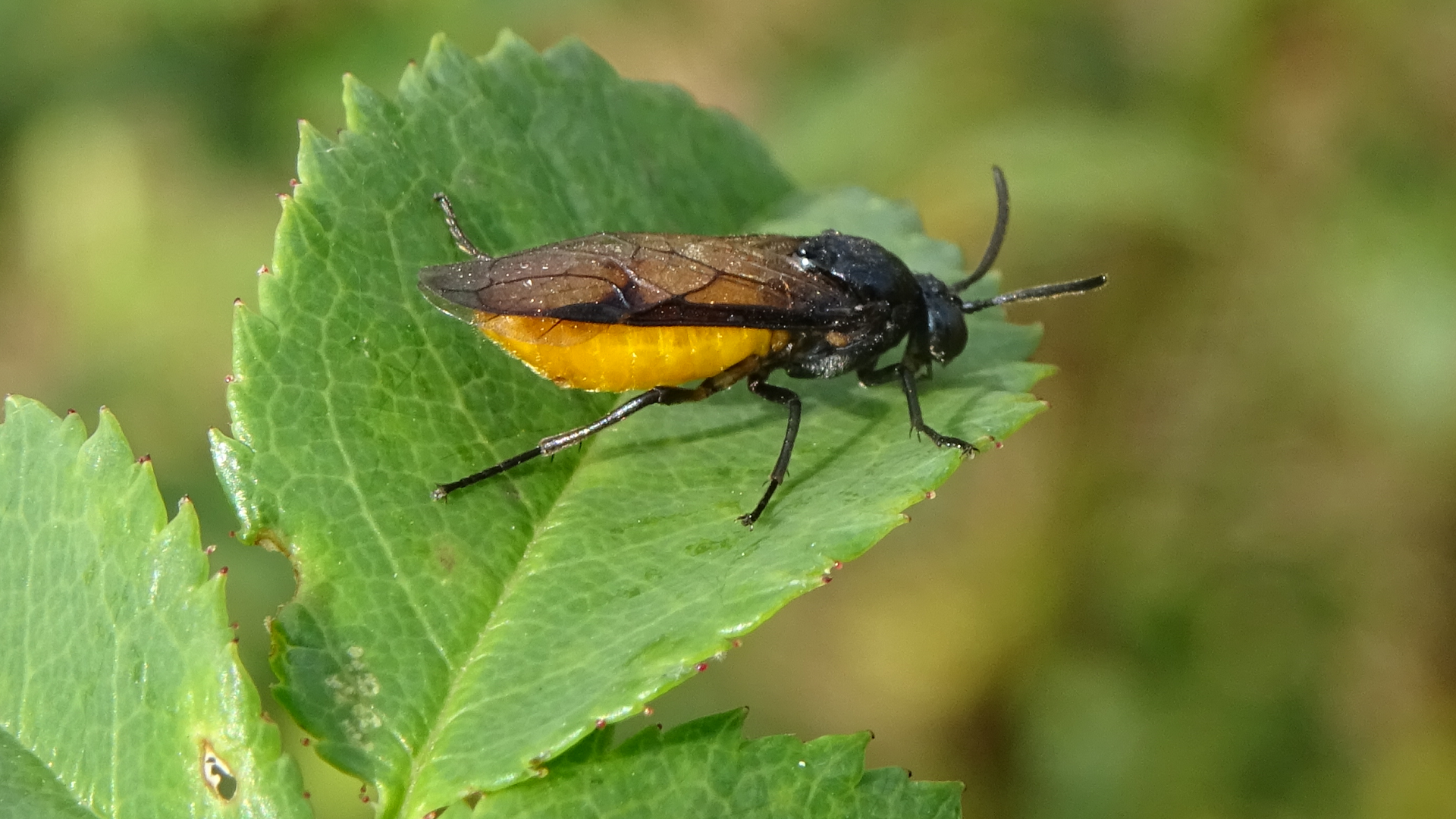
#
Cryptic Clubhorn
Abia aenea/lonicerae agg.
This species (12mm) flies from April until June. Adults of
A. aenea and
A. lonicerae are very similar and often recorded as an aggregate. Adults of both species cannot normally be separated from photographs. They have larvae that feed on Honeysuckle and Snowberry.
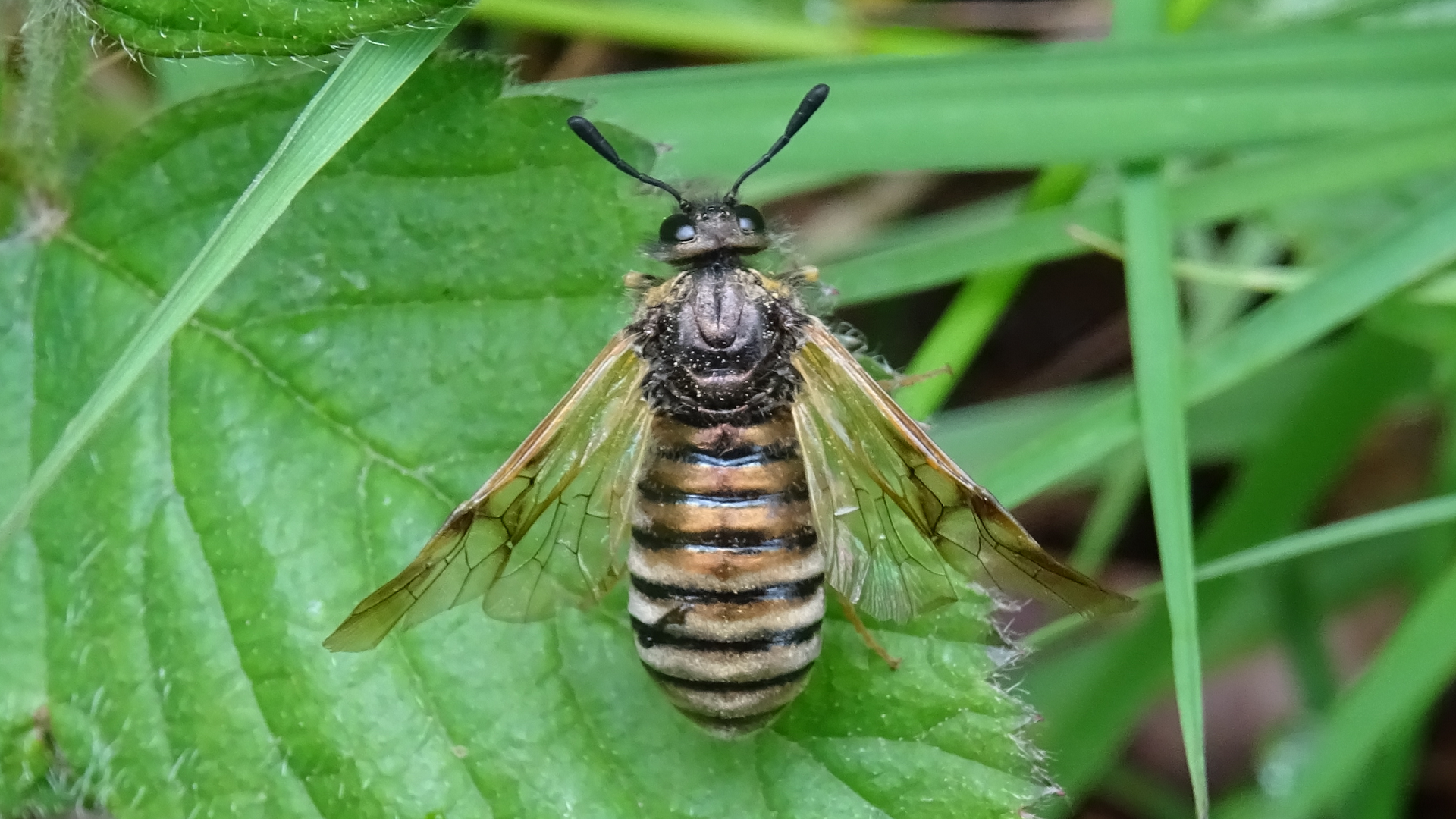
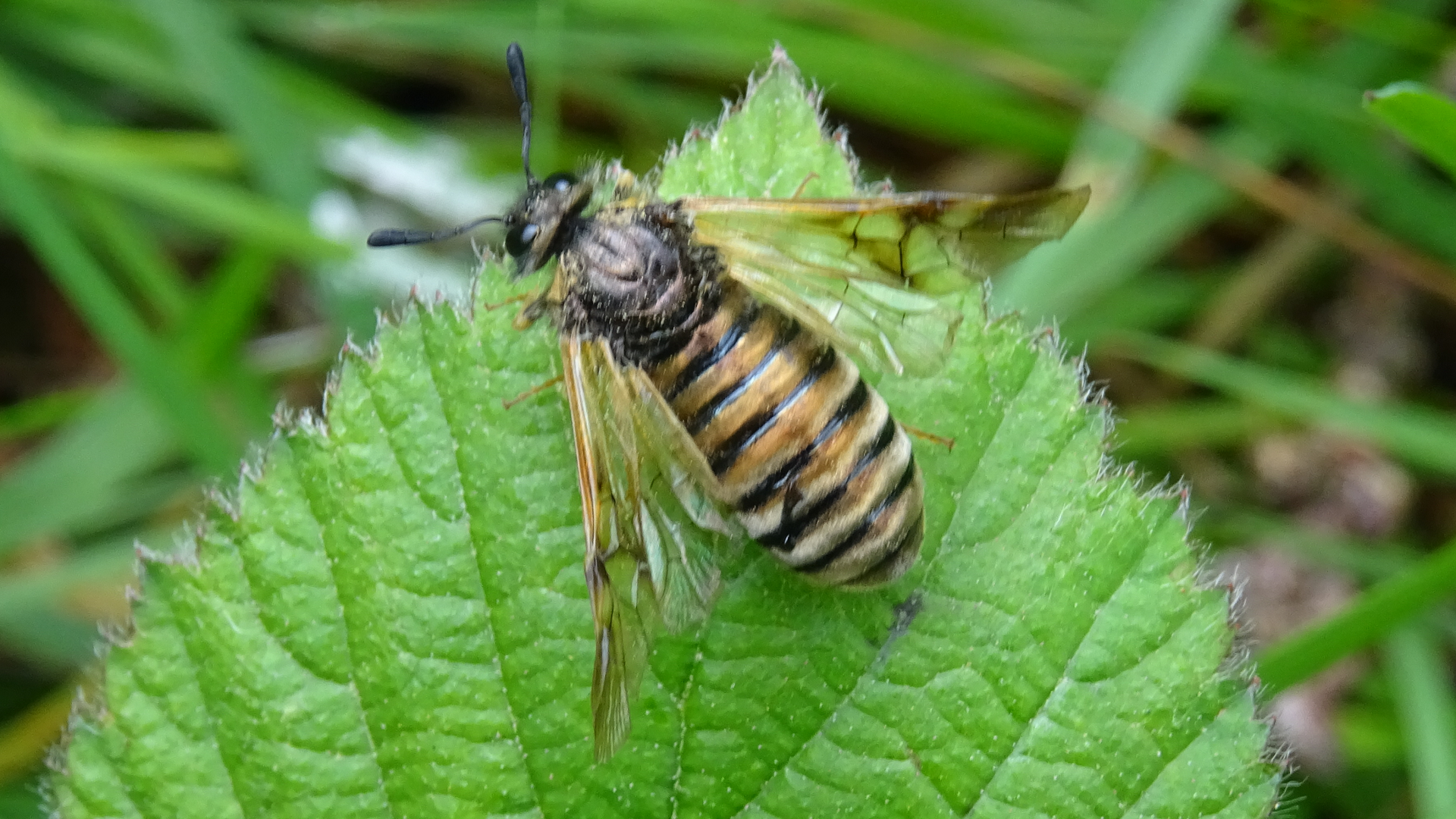
Scabious Clubhorn
Abia nitens
The Scabious Clubhorn (10mm) is a Sawfly that flies from May until August. Its larvae feed on Scabious and Cut-leaved Teasel.
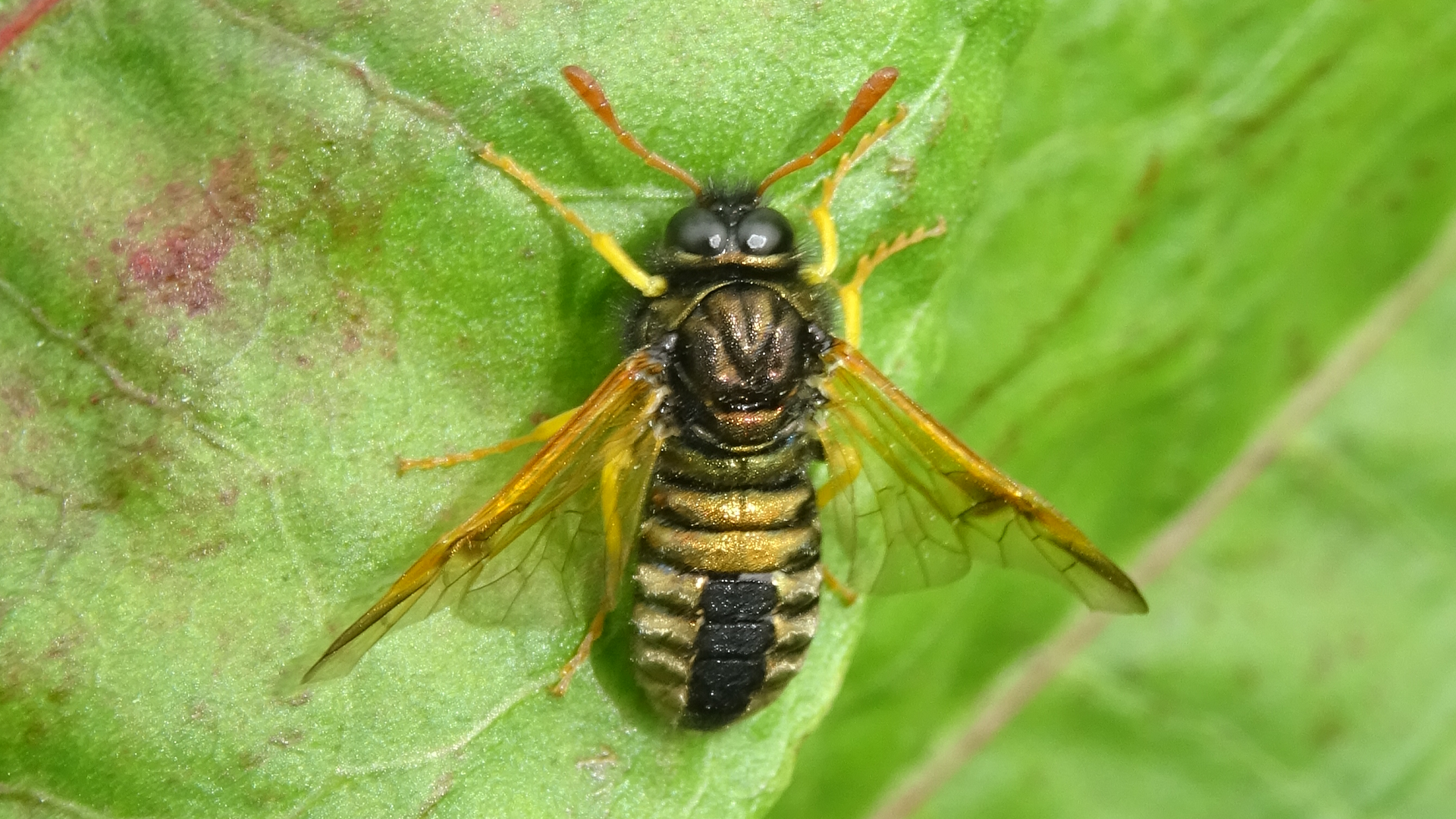
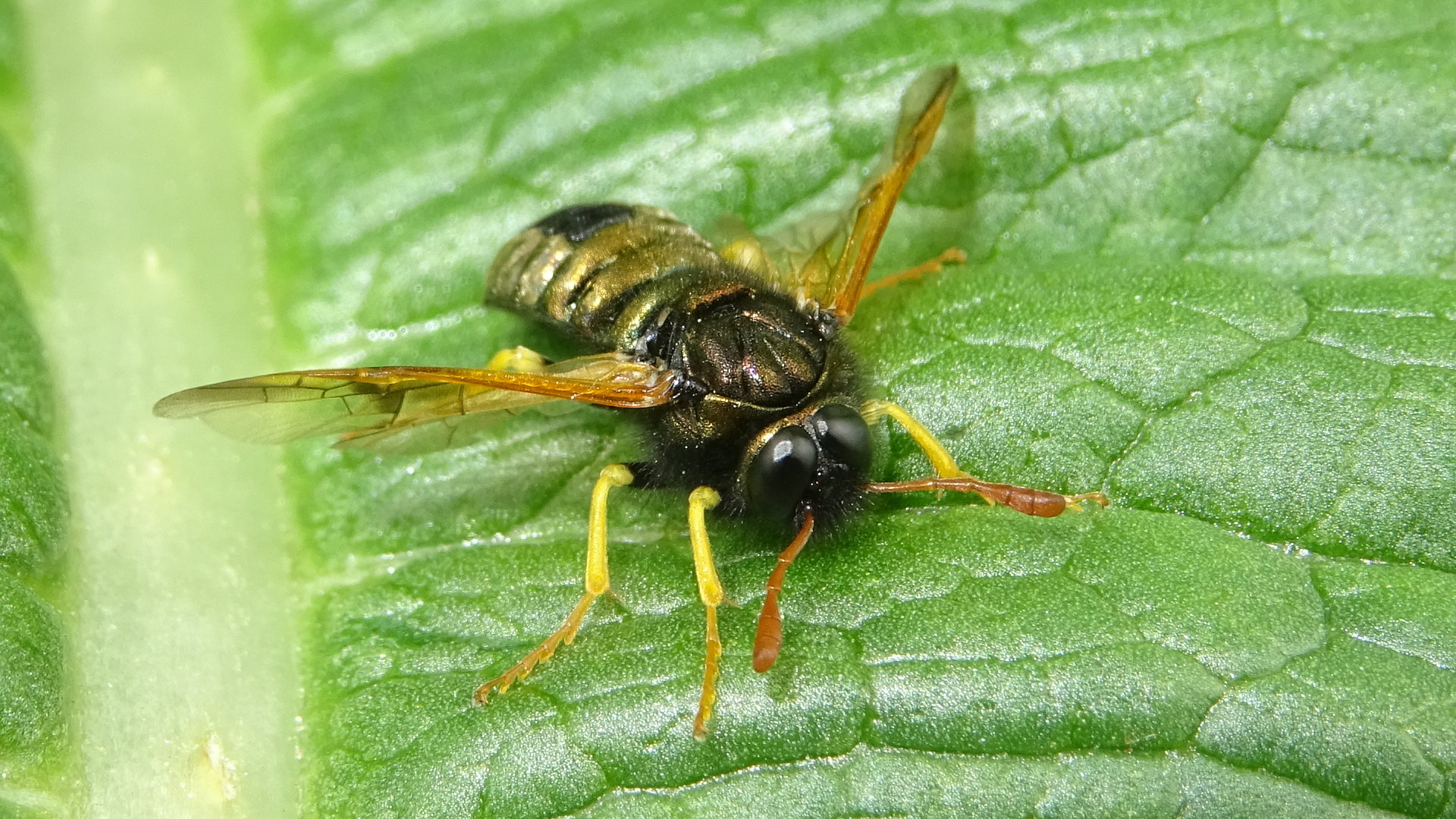
© hainaultforest.net. All rights reserved.


